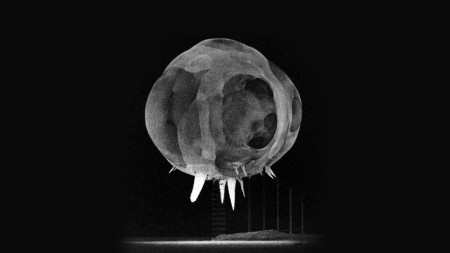First Millisecond Of A Nuclear Explosion Is The Becoming of Death.
The first millisecond after a nuclear explosion. An imperceptible moment, a horrifying glance into the first wave of annihilation. It’s pretty terrifying. Pretty. Terrifying.
Gizmodo:
This is fascinating, a nuclear explosion from the Tumbler-Snapper tests performed in Nevada during 1952. It looks different from all nuclear explosions you’ve seen because it’s what it looks like one millisecond after detonation. It looks like a skull by Tim Burton.
The face of atomic death just one second away from unleashing its absolute destruction.
Only one millisecond after the bomb explodes, this 65.6-foot (20 meters) ball of fire appears in midair, with spikes that look like rotten teeth or stalactites of fire (called the rope trick effect).The explosion was captured by a Rapid Action Electronic camera–a high speed device designed to photograph nuclear explosions just milliseconds after ignition.
What’s a Rapid Action Electronic camera?
The rapatronic camera, as it is called, was created by Harold Edgerton in the 1940s using two polarizing filters and Kerr cell instead of a shutter, which is too slow for this job. A Kerr cell is a panel that changes its polarization depending on the voltage applied. This acts as a very high speed shutter, which allows the perfect exposition to capture this moment.
Creepy.




